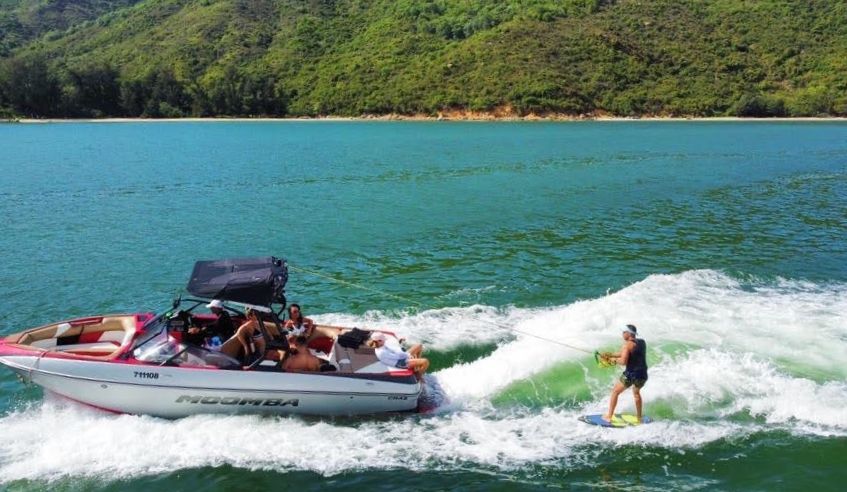
Wakesurfing is more than a substitute for traditional surfing, it’s a distinct watersport with endless possibilities.
Raphael Blet hears all about it from Wakesurf DB’s Alice Leung and Albert WongPHOTOS COURTESY OF Wakesurf DB

Wakesurfing is more than a substitute for traditional surfing, it’s a distinct watersport with endless possibilities.
Raphael Blet hears all about it from Wakesurf DB’s Alice Leung and Albert WongPHOTOS COURTESY OF Wakesurf DB
WAKESURFING ALLOWS YOU TO RIDE the waves of a boat’s wake, rather than be pulled along (as you are in wakeboarding). Wakesurfers stand on the board instead of being strapped onto it. They stay only about 5 metres behind the boat after they let go of the towrope, while wakeboarders can be as far back as 20 metres and hold onto the towrope as they ride.THE BEST ADVICE for new wakesurfers is to relax and let the boat do the work. Sit in the water with your heels on the edge of the board, toes pointing up. As the board begins to move, let your knees come into your chest as you dig in your heels. Keep your knees bent until the board flips up to your feet and your weight is over the board. Stand up gently.
TO STAY UP ON THE BOARD, find your centre of gravity, and stand tall with your chest up, bum in and knees slightly bent over your toes. Once you are comfortably surfing, with a consistently slack line, it’s time to toss the rope. Either throw the rope directly back into the boat, or across to the other side of the wave so that you don’t get caught up with it.


TO STAY SAFE, you should only wakesurf behind a boat whose propeller is not exposed in the back. True wakesurfing involves riding right behind the boat, so it should only be done behind an inboard or V-drive. Wakesurfing behind an outboard is very risky as you could hit the propeller.
KIDS AS YOUNG AS SEVEN YEARS can learn to wakesurf, providing they are confident swimmers. What’s important is that they are taught to wakesurf on a kid-sized board. Riding a full-size board makes it difficult for them not only to get up but to control the board once they are up and riding.
THERE ARE COUNTLESS TRICKS to learn, such as carving
turns, floaters, bottom turns, slashes, board slides and 360s. Just
about anyone who can wakesurf can perform an Ollie. It’s a flashy but easy trick that involves popping the whole board into the air.
WAKESURFING IS GROWING IN POPULARITY in part because the ride is significantly slower – 11 miles per hour – than wakeboarding, which takes riders through the water at nearly 20 miles per hour. In wakesurfing, you’re going to tip over more than you’re going to slam or get hurt. You can pretty much guarantee that you will fall –don’t jump, allow yourself to fall gently into the water.
THERE ARE THREE DIFFERENT TYPES of wakesurf board: surf, hybrid and skim. Surfshape wakesurf boards, with a large surface area and three-fin setup, provide a stable and forgiving platform on which to learn the basics. Hybrid boards offer greater flexibility by combining stability and manoeuvrability. Ultra-thin skimboards are poppy and nimble – perfect for surface tricks.
YOU DO NOT NEED PRIOR WATERSPORT EXPERIENCE to learn how to wakesurf, and it provides a great workout for the legs and upper body. It’s a fun and relaxing watersport which can be enjoyed year-round. What’s more, DB is an ideal place to wakesurf, as its surrounding waters are mostly calm.

Based in Peng Chau, Wakesurf DB offers fully captained wakesurf experiences and instruction for children and adults.
WhatsApp Alice Leung on 6123 1181 for more information and to make a booking.
Follow FB @wakesurfdb and IG @wakesurf.db to find out more.